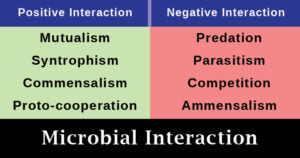Microbial interaction and its types with examples
Types of Microbial Interaction 1. Mutualism Examples of mutualism: Lichens: Lichens are an excellent example of mutualism. They are the association of specific fungi and certain genus of algae. In … Read more

